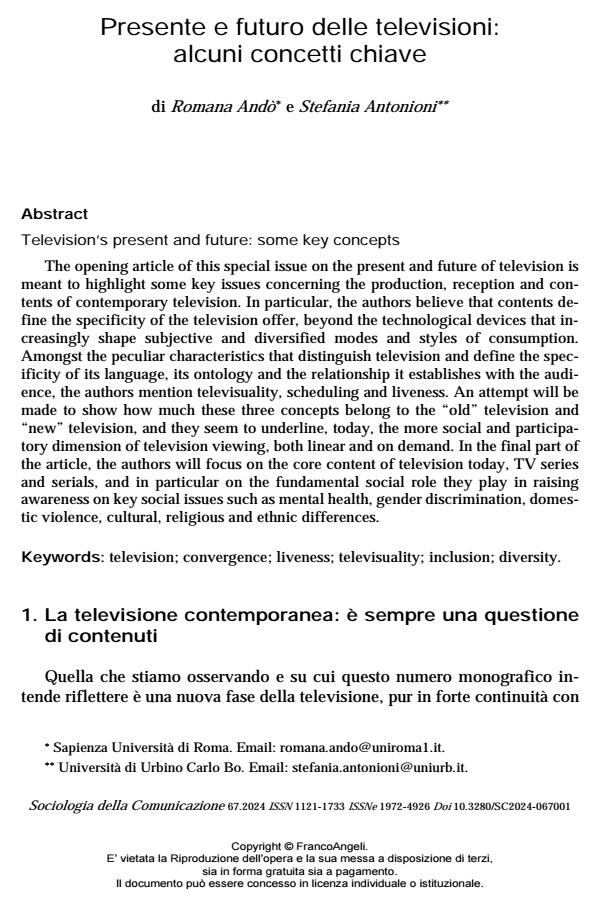Television’s present and future: some key concepts
Journal title SOCIOLOGIA DELLA COMUNICAZIONE
Author/s Romana Andò, Stefania Antonioni
Publishing Year 2025 Issue 2024/67
Language Italian Pages 15 P. 5-19 File size 106 KB
DOI 10.3280/SC2024-067001
DOI is like a bar code for intellectual property: to have more infomation
click here
Below, you can see the article first page
If you want to buy this article in PDF format, you can do it, following the instructions to buy download credits

FrancoAngeli is member of Publishers International Linking Association, Inc (PILA), a not-for-profit association which run the CrossRef service enabling links to and from online scholarly content.
The opening article of this special issue on the present and future of television is meant to highlight some key issues concerning the production, reception and contents of contemporary television. In particular, the authors believe that contents define the specificity of the television offer, beyond the technological devices that increasingly shape subjective and diversified modes and styles of consumption. Amongst the peculiar characteristics that distinguish television and define the specificity of its language, its ontology and the relationship it establishes with the audience, the authors mention televisuality, scheduling and liveness. An attempt will be made to show how much these three concepts belong to the “old” television and “new” television, and they seem to underline, today, the more social and participatory dimension of television viewing, both linear and on demand. In the final part of the article, the authors will focus on the core content of television today, TV series and serials, and in particular on the fundamental social role they play in raising awareness on key social issues such as mental health, gender discrimination, domestic violence, cultural, religious and ethnic differences.
Keywords: television; convergence; liveness; televisuality; inclusion; diversity.
- A Girls’-Eye View: Italian female adolescence and girlhood media representations Romana Andò, Leonardo Campagna, Danielle Hipkins, in Comunicación y Género /2025 pp.e101029
DOI: 10.5209/cgen.101029
Romana Andò, Stefania Antonioni, Presente e futuro delle televisioni: alcuni concetti chiave in "SOCIOLOGIA DELLA COMUNICAZIONE " 67/2024, pp 5-19, DOI: 10.3280/SC2024-067001